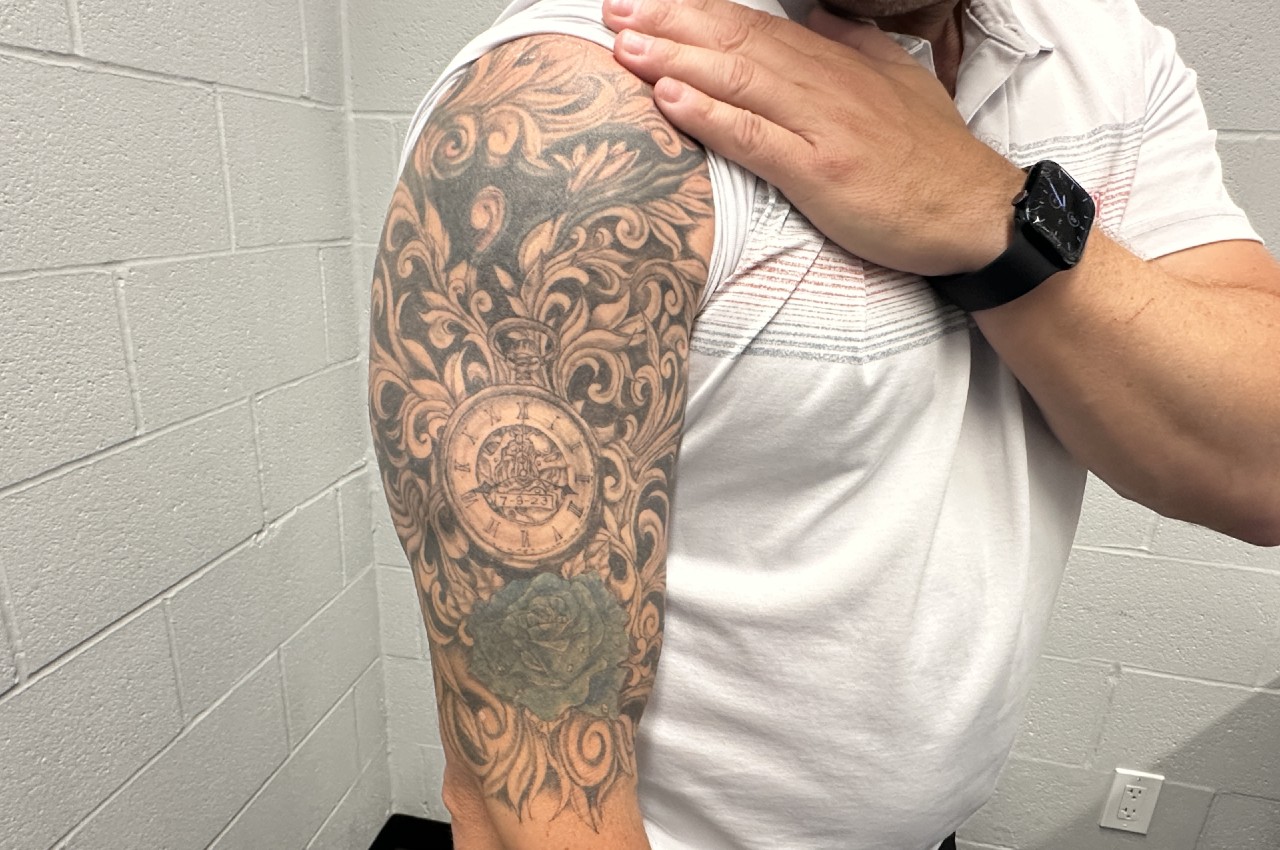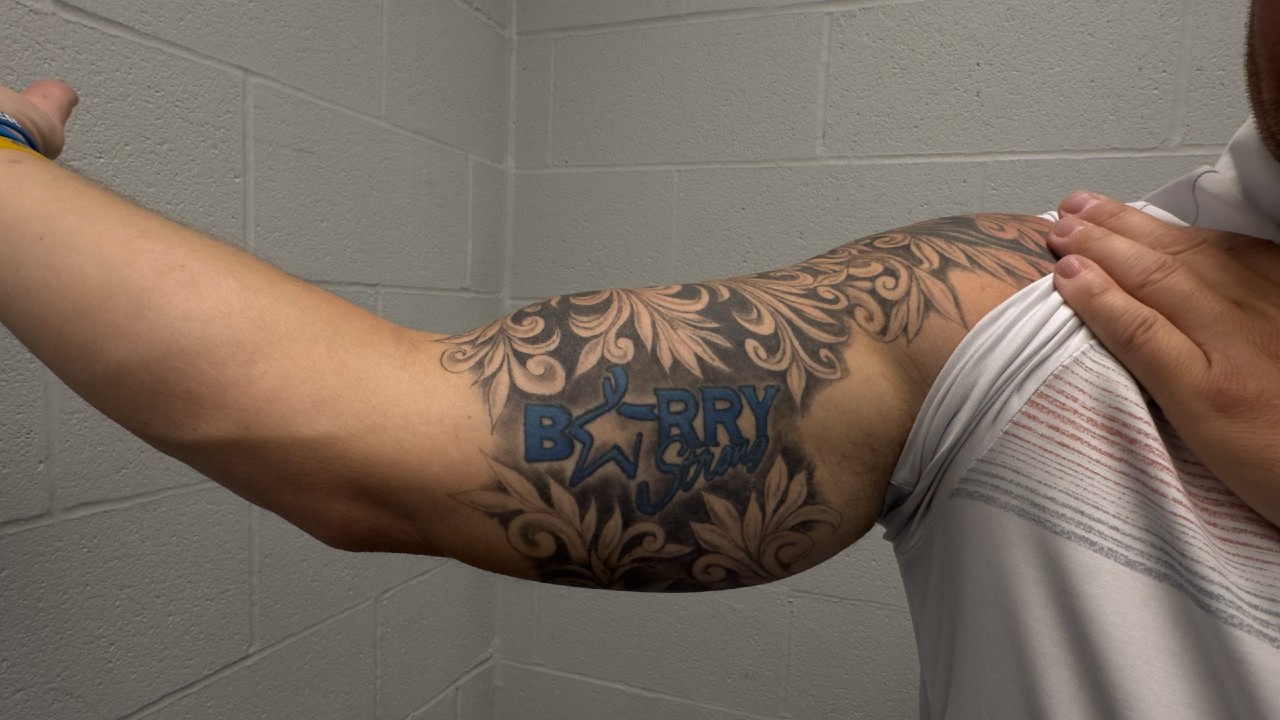TORONTO — Veteran umpire Scott Barry was going to get the tattoo, whether he was allowed to display it or not.
After an off-season spent working through a piece that covers his entire upper right arm, Barry purchased black and skin-coloured sleeves to wear underneath his umpire’s uniform, if necessary.
If some of the tattoo revealed itself on a hot summer day in a short-sleeved uniform, then he’d live with the consequences.
“If they had asked me to cover it, I didn’t have any issues with that,” Barry said. “I had already planned for that. And if they’re gonna fine me, I’m okay with that, too. It’s that important.”
Barry no longer needs to worry. Thanks to a change in the 2025 collective bargaining agreement between the league and the MLB Umpires Association — largely inspired by Barry’s story — umpires are now, for the first time in league history, allowed to have arm tattoos visible, above the elbow.
It’s a small tweak that means the world to Barry, allowing him to freely honour the memory of his late wife, Christine, and display a message of support to others battling colon cancer.

Barry has been working through the idea for his tattoo for a few years.
It began while Christine was in the throes of a nine-year battle with colon cancer. Over the course of several years, she underwent 18 rounds of chemotherapy and made over 20 trips from their home in Michigan to Houston for immunotherapy treatments.
Barry would take time off from work to accompany her when possible, including opting out of the entire 2020 season relaunch, due to the additional risk that transmitting COVID-19 could have posed to his wife. When umpiring, he wore a blue “Together We Fight” wristband and wanted to go beyond that with a permanent message of strength for his wife.
The Barry family — Scott, his parents, and his brother — went together to get “Barry Strong” tattooed in blue, the colour of colorectal cancer awareness and Christine’s favourite colour. In the years since, friends of the family have followed suit and gotten the same tattoo, celebrating a beloved friend and teacher.
When Christine passed away in July of 2023, Barry wanted to make the piece more substantial in her memory. Over the course of five sessions at a small studio space in a Quincy, Mich., salon, Barry and artist Loren Reif created a beautiful and touching half-sleeve rich in personal meaning and memory.

The piece is anchored by a pocket watch, displaying Christine’s date and time of death. The concept of time became an important touchstone for the couple during Christine’s more difficult times, helping her recenter on the positivity and strength that came to define her final years to those close to her.
“We were always looking forward,” Barry explained. “She would have days where she would struggle, and I think pretty much anybody in her situation would have. It was always a thing between us, I’d simply say, ‘Okay, I get it, but we’ve got five minutes. And at the end of that five minutes, I need you to focus on getting healthy.’ You don’t have the ability to play ‘woe is me,’ and so we never focused on that. She had such an amazing attitude about getting better, and having the best time we possibly could.”
The tattoo also includes a blue rose, again a nod to the colour for colorectal cancer awareness, and a reminder of Barry’s standing order at a local flower shop for the last four years of Christine’s battle. Every Tuesday, no matter where Barry was on the road, Christine would receive a flower delivery at home or at the school where she taught.
The piece is also a reminder to try to maintain Christine’s positive spirit. Barry has two teenage sons, Cameron and Alex — for whom he has another tattoo on his left shoulder — and the family practises gratitude for their time with Christine.
“In essence, it’s a memorial to her,” Barry said. “I was lucky that I was with her for 25 years. I feel bad for the people who never got the chance to meet her, because she was just unbelievable. She’s such a good person, and a phenomenal teacher and mother. So, you know, we still try to stay positive and to look forward. We still talk about how fortunate we were to have Mom.”

Prior to this winter, the agreement with Major League Baseball and the MLBUA stipulated that “tattoos and other forms of body art must be covered by their uniform so they are not visible.” In other words, even a touching tribute like Barry’s would need to be covered up during games.
While Barry was going to get the tattoo whether he had to cover it or not, he did let his fellow umpires know that he was doing it. He told Dan Bellino, who was vice president of the MLBUA during collective bargaining negotiations this winter and is now the MLBUA president, who flagged the rule during union conversations with the league.
Both sides saw the value in loosening the language around body art. Now, umpires can have arm tattoos visible, as long as they’re above the elbow, “subject to Commissioner’s Office approval which shall not be reasonably withheld.” And while Barry is the only active MLB umpire with tattoos the policy applies to, the league and union agreed that the policy change could help in the future, too.
“Scott’s situation is very unique. He didn’t do that in anticipation of the language changing,” said Bellino. “I think he’s the first, and I would highly doubt he’d be the last. Tattoos are a little more accepted, in general, and we’re seeing that it’s a form of expression for people. I think that it was mutually beneficial to say, ‘we don’t want to exclude somebody that would have the ability to umpire at the major-league level based on having visible tattoos.’ That just wouldn’t serve the best interests of anybody, or the game.”
But while it’s a significant development for Barry, the rule change occurred with next to no fanfare — even for those at field level.
“I didn’t know that,” said Blue Jays manager John Schneider, who got his first tattoo in January. “I think it’s cool. I think there have been, actually, a couple more umpires with beards, too. They’re people, too. I know I give them a hard time, but I think it’s cool.”
It’s an interesting change for a league that deemed tattoos on pitchers a possible distraction to hitters just 20 years ago. In 2004, late Blue Jays pitcher Justin Miller was encouraged to cover his arm tattoos with sleeves because someone complained that his coloured arm tattoos were distracting. It became unofficially known as the Justin Miller Rule, and while John Axford remembers it more as a rumour than a hard rule, it was enough to discourage him from getting tattoos on his throwing arm during his playing days.
“It’s a new-world thing, for sure,” said Blue Jays starter Kevin Gausman, who has tattoos but not visible on his throwing arm. “You look at players 20 years ago, not many guys had tattoos, or had to cover them up. Whereas now, you know, there’s guys with face tattoos that are pitching.”
“That’s cool. I mean, no one should have to cover up what their skin shows,” said Bowden Francis, the Blue Jays pitcher whose tattoos include an enso on the top of his pitching hand. “They can express their art however they want to. They’re on the field, just like us, and I think they should be able to express themselves.”
The change is small in scope, but large in meaning.
At the moment, Barry is the only umpire who will have ink poking out as he makes a strike call behind the plate or a dramatic out call at first base. For him, though, the opportunity to memorialize his wife every day, and have that desire recognized and accepted by the league, is significant.
“It’s something that I’m super proud of, because of what it is. I love what it stands for, and I always have that with me. So that’s just super important to me,” Barry said.
“I appreciate the fact that baseball was open to it, allowing me to have it and not cover it up. Hopefully, if other guys want to do something that’s important or special to them, I love that now there’s an opportunity for that to happen for them.”


